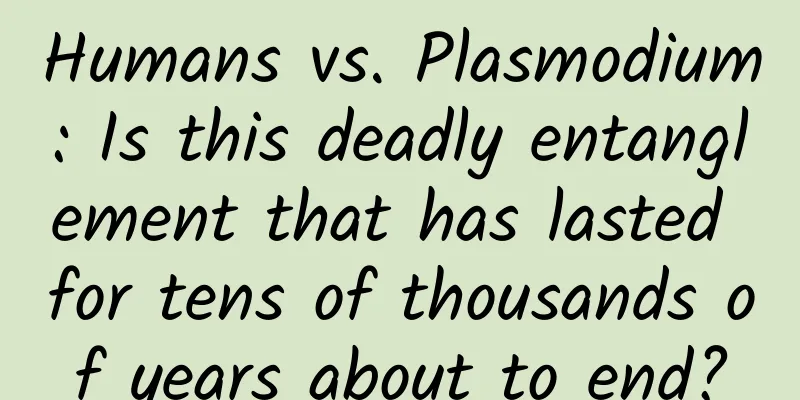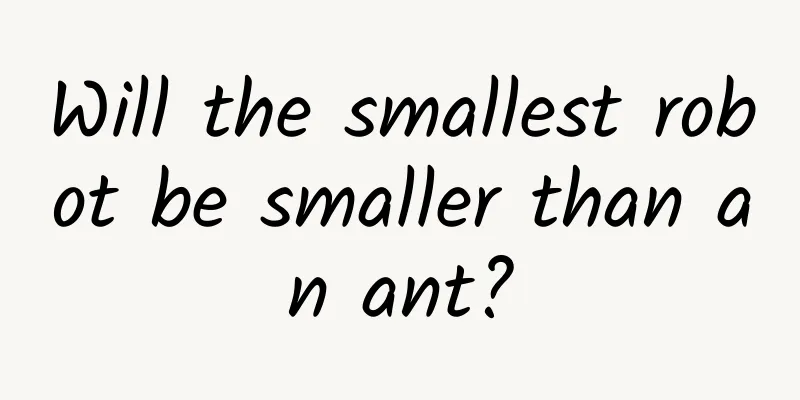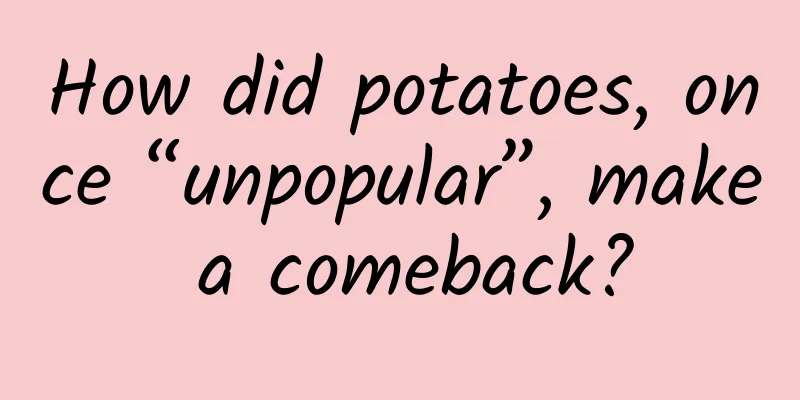Humans vs. Plasmodium: Is this deadly entanglement that has lasted for tens of thousands of years about to end?

|
Is a fatal entanglement that has lasted for tens of thousands of years about to end? On October 6, 2021, the World Health Organization (WHO) officially recommended the RTS,S/AS01 (RTS,S) vaccine for widespread use among children in areas with a high malaria burden. This is the first malaria vaccine in human history. Humans VS malaria parasites, this eternal war, can it be ended with an order from the WHO? Welcome to watch the battle between humans and malarial parasites narrated by Jiujiu. The outcome of this battle concerns everyone | Pixabay Round 1 Hundreds of thousands of years ago, primitive humans encountered wild malaria parasites in Africa. The malarial parasite uses the skill "mosquito bite" to successfully hitch a ride on a mosquito and enter the human body to parasitize. In the hundreds of thousands of years that followed, humans used skills such as "strange clothes" and "hard resistance" to try to treat the disease. However, it is of no avail. In the first round, humans failed... **On June 30, 2021, the World Health Organization announced that China has officially achieved malaria-free status. **However, before that, China had been free of malaria for nearly four years, gradually withdrawing from the center stage of public health in my country. In life, malaria seems to have become unfamiliar. However, throughout the history of human development, the shadow of death cast by malaria has been with us for many years. According to research, the origin of Plasmodium falciparum may be hundreds of thousands of years ago. When primitive humans were still in Africa, the battle between humans and malaria had already begun [1]. Sporozoites of Plasmodium 丨 Wikimedia Commons, Ute Frevert & Margaret Shear / CC BY-SA 2.5 (https://creativecommons.org/licenses/by-sa/2.5) At this stage, humans were powerless to fight back. Historical records from Europe, Asia and other places show large-scale casualties caused by malaria. John MacCulloch, a European geologist born in 1773, attributed Europe’s extremely low life expectancy—25 in the Netherlands, 50 in Britain, and as little as 22 in parts of France—to malaria. When he was alive, he did not know what the pathogen of malaria was, and called it an invisible unknown poison. He also introduced the word malaria, which means dirty air in Italian, into English to refer to malaria.[2] In order to prevent breathing polluted air, the doctor's outfit became the mainstream in the fight against malaria in Europe. Medieval doctors fighting plague would wear bird-beak masks | Public domain In ancient China, malaria was a mysterious miasma that appeared in Lingnan, Sichuan and Guizhou. It could kill people without them even noticing, leading the ancients at that time to believe that the South was a wild and dangerous place. Due to the shallow understanding of malaria, this battle between humans and malaria can be described as one in which the enemy is in the dark and we are in the light, making it difficult to resist. Of course, at this stage, humans have a more primitive weapon - natural selection. Scientists have discovered that some people in the Mediterranean, Africa, India and other regions suffer from a strange genetic disease, sickle-shaped red blood cells. People with this type of red blood cells will face the problem of anemia, the blood's oxygen transport capacity is very weak, and blood vessels are easily blocked, which may be life-threatening in severe cases. Comparison of normal red blood cells (top) and sickle cells (bottom) | Public domain Why haven't people carrying this gene been eliminated by natural selection? Because of malaria. ** Patients with sickle cell disease have a certain resistance to malaria. ** Moreover, this is a recessive gene mutation. Only when both chromosomes mutate will it lead to severe anemia. Compared with the shadow of death brought by malaria, what is anemia? Therefore, although malaria is ferocious, humans are also fighting back, but the cost is high - generation after generation has fallen to malaria in the process of natural selection. Round 2 Entering the Age of Discovery, Humans obtained the item "Cinchona Tree" and extracted **"Quinine**, In the industrial age, props were upgraded and the antimalarial drug "chloroquine" was synthesized, which had a structure similar to quinine. The malarial parasite's ability **"Mutation** increases its drug resistance, reducing the effectiveness of chloroquine. Humans use the skill **"Nobel Prize" and obtain the item "Artemisinin"**. The malarial parasite once again used its "mutation" mutation skill to try to increase its drug resistance. The battle situation became stalemate... According to Peruvian legend, an earthquake in the Loxa region caused a large number of cinchona trees in the surrounding area to fall into the lake, causing the lake water to have the ability to cure mysterious fevers. After that, the locals learned to use cinchona bark to treat malaria. Fortunately, cinchona bark does contain an effective antimalarial ingredient - quinine [3]. Cinchona tree | Public domain With the advent of the Age of Exploration, quinine, a special medicine, spread all over the world. In 1693, cinchona cream made from tree bark even saved Emperor Kangxi of the Qing Dynasty on the other side of the world. With the advantage of chemical engineering, German scientists artificially synthesized chloroquine, an antimalarial drug with a structure very similar to quinine, in 1934. Although malaria parasites do not have as strong mutation capabilities as viruses, they have gradually developed drug resistance with the use of antimalarial drugs. A variety of drugs developed subsequently, including pyrimethamine and artemisinin, all face the problem of drug resistance to a certain extent[4]. It can be said that as long as a drug is used for a long enough time, the malaria parasite will evolve into a corresponding drug-resistant strain. After all, drugs have their limits, so humans cannot rely solely on drug treatment to fight malaria. The two hosts of malaria are mosquitoes and humans. Killing and isolating mosquitoes are also good ways to prevent and control malaria. The guidelines for malaria vector control compiled by the World Health Organization strongly recommend the use of mosquito nets sprayed with insecticides (pyrethroids and piperonyl butoxide) or the use of residual insecticides indoors in malaria-affected areas[5]. These two methods can kill 60%-90% of mosquitoes in areas with low resistance to pyrethroids. Even in areas with higher resistance, they can kill nearly 30% of mosquitoes. Coupled with the physical isolation of mosquito nets, the success rate of mosquitoes sucking blood can even be as low as less than 10% in some areas[6]. Killing and isolating mosquitoes is also a good way to prevent and treat malaria | Pixabay However, even with the availability of drugs and means to block transmission, there were still 229 million cases of malaria in 2019, with more than 400,000 deaths. More than 90% of these cases and deaths occurred in Africa, with more than 60% of deaths among young children[7]. Out of our sight, some people are still living under the shadow of malaria. Round 3 Humans have developed a vaccine and eradicated smallpox. Malaria parasite is far more complex than smallpox virus, and is not afraid of vaccine props Humans have upgraded their vaccine skills and are very effective against malaria parasites The malarial parasite blood bar dropped sharply... Since the invention of cowpox, humans have had another way to fight disease - vaccines. Vaccines allow the human immune system to simulate combat against different pathogens. In this way, when pathogens enter the human body, they will be immediately eliminated. In this way, smallpox was the first disease to be eliminated by humans. However, compared with the smallpox virus, the structure of malarial parasites (a type of animal under the class Sporozoa of the phylum Protozoa) is more complex. Generally speaking, viruses may only have a dozen proteins, but there are more than 5,000 known malarial parasite proteins. It is not easy to find a suitable target to make a vaccine from the many malarial parasite proteins. At the same time, malarial parasites have an extremely complex life cycle. In the human body alone, they can be divided into the pre-erythrocytic stage, the extra-erythrocytic stage, and the erythrocytic stage [8]. The protein expression, morphology, and parasitic location of malarial parasites at different stages vary greatly, which means that completely different vaccines may need to be designed for malarial parasites at different stages. These factors increase the difficulty of developing malaria vaccines. But in addition to technical difficulties, malaria vaccine research and development also faces the difficulty of funding shortage. Today, malaria is rampant in low-income areas, which are not good markets for selling vaccines, so pharmaceutical companies naturally lack the motivation to invest. Due to the difficulty in research and development and low profits, the number of researchers developing malaria vaccines is far less than that of other vaccines[9]. But human heroism often comes from actions that are done despite knowing they are impossible. An effective malaria vaccine has finally been developed. RTS,S/AS01 (RTS,S) vaccine is likely to make great contributions to human victory over malaria parasites | Pixabay On October 6, 2021, WHO issued recommendations for the widespread use of the malaria vaccine RTS,S/AS01 (RTS,S) among children in subtropical areas. The story of the development of this vaccine originated in the 1960s. The existence of nuclear weapons led the world into the Cold War, but at the same time nuclear radiation also brought hope of life. The mutation caused by radiation can reduce the toxicity of malarial parasites. People hope to use this to create low-toxic malarial parasites to make vaccines. However, this method did not produce a suitable strain of worms at the time, but it helped researchers find the key for the immune system to recognize and attack malarial parasites - CSP protein. In 1987, scientists used this protein to make vaccines, and they have been doing it for 35 years. The RTS,S/AS01 (RTS,S) vaccine targets pre-erythrocytic malarial parasites and can prevent malarial parasites from entering the liver from blood vessels. In clinical trials in Africa from 2009 to 2011, this vaccine achieved good results: 18 months after vaccination, the number of patients was reduced by about 40%. On the other hand, the idea of making vaccines based on radiation attenuation has not stopped. A vaccine called PfSPZ is based on this idea and has also shown good results and high safety in recent experiments. The mRNA technology that has shined in the development of the new crown vaccine has also been invested in the development of malaria vaccines[10]. However, can the RTS,S/AS01 (RTS,S) vaccine end malaria worldwide? It is difficult to achieve this goal with just this vaccine. Although the RTS,S/AS01 (RTS,S) vaccine can reduce the number of patients by about 40%, this also means that its protection rate is only about 30~40%. In other words, if you want to eradicate malaria, you need to combine it with other measures, such as insecticide-treated mosquito nets, new antimalarial drugs, and a complete epidemic monitoring system. The implementation of these measures requires global multilateral cooperation. Currently, more than 90% of malaria occurs in the poorest countries on the African continent, such as Nigeria, Congo, and Uganda, where the economy is backward and the health infrastructure is weak. Therefore, in terms of malaria prevention and control, they need a lot of financial and technical support. Moreover, with the increasing global economic and cultural exchanges, malaria can spread across borders very easily. As long as there is malaria in one country, the world will still face the risk of a malaria outbreak. Therefore, the eradication of malaria requires the attention and cooperation of governments, health organizations and humanitarian agencies around the world. Perhaps, in the near future, with the help of safer and more effective vaccines and through global multilateral cooperation, the long-standing war between malaria parasites and humans will have the possibility of coming to an end. References [1]Virginie Rougeron, Larson Boundenga, Céline Arnathau, Patrick Durand, François Renaud, Franck Prugnolle, A population genetic perspective on the origin, spread and adaptation of the human malaria agents Plasmodium falciparum and Plasmodium vivax, FEMS Microbiology Reviews, 2021;, fuab047, https://doi.org/10.1093/femsre/fuab047 [2]Deb Roy R. Malarial Subjects: Empire, Medicine and Nonhumans in British India, 1820–1909.[M]Cambridge (UK): Cambridge University Press; 2017 Sep. Chapter 2 [3]Brabin, B. Analyzing malaria events from 1840 to 2020: the narrative told through postage stamps. Malar J 20, 399 (2021). https://doi.org/10.1186/s12936-021-03932-7 [4]Wang J, Xu C, Liao FL, Jiang T, Krishna S, Tu Y. A Temporizing Solution to "Artemisinin Resistance". N Engl J Med. 2019 May 30;380(22):2087-2089. doi: 10.1056/NEJMp1901233. Epub 2019 Apr 24. PMID: 31018065. [5]Guidelines for Malaria Vector Control. Geneva: World Health Organization; 2019. Recommendations. Available from: https://www.ncbi.nlm.nih.gov/books/NBK538116/ [6]Gleave K, Lissenden N, Chaplin M, Choi L, Ranson H. Piperonyl butoxide (PBO) combined with pyrethroids in insecticide‐treated nets to prevent malaria in Africa. Cochrane Database of Systematic Reviews 2021, Issue 5. Art. No.: CD012776. DOI: 10.1002/14651858.CD012776.pub3. Accessed 17 October 2021. [7]https://www.who.int/news/item/06-10-2021-who-recommends-groundbreaking-malaria-vaccine-for-children-at-risk [8] Liu Lingyun, Zheng Guangmei. General Zoology 4th Edition [M] Beijing: Higher Education Press. 2009.8 [9]https://www.cdc.gov/malaria/malaria_worldwide/reduction/vaccine.html [10]https://doi.org/10.1371/journal.pmed.1001685 [11] Nussenzweig RS, Vanderberg J, Most H, Orton C. Protective immunity produced by the injection of x-irradiated sporozoites of plasmodium berghei. Nature. 1967;216(5111):160-2. Author: Jiujiu Editor: Peddler Typesetting: Washing dishes The copyright of this article belongs to "I am a Scientist" and may not be reproduced without permission. |
<<: Shocking! 400 camera accounts sold for 150 yuan... Pay attention to privacy and security!
Recommend
The high-tech luxury MPV Roewe iMAX8 will be officially launched on October 31st. Your private luxury first-class cabin is ready.
It’s almost there! It’s almost there! The “top in...
Promotion Tips: How to promote O2O e-commerce apps?
Introduction: The article comes from the speech o...
Information flow effect is not good? 80% of the time, there is a problem with the landing page!
Seeing the world through our eyes is an innate ab...
Starting from scratch - 10 steps to become a professional iOS developer
Want to get a piece of the mobile development pie...
Does it look good? I'm just pretending! After reading this article, be careful when you see flowers...
A few days ago, when I was surfing the Internet, ...
The "aging but not aging" brain: Your cognitive function has not reached its peak at the age of 70
Written by: Liu Fang Editor: Kou Jianchao Layout:...
An article analyzing the essence of Tik Tok marketing!
Many friends, especially business friends, have b...
Sony's new 4K HDR flagship Z9D released: Will it stick to its craftsmanship or bow to the market?
After China fully entered the Internet era, the I...
Muzi Hongtu's "Tutorial on Starting a Live Streaming Account with 0 Fans" - Logical steps to start a live streaming account with mainstream gameplay
Course Contents: 1-2022 must read 2- How to break...
Krenz composition 6th term ends in June 2021 [HD image quality with courseware brushes]
Krenz composition 6th term ends in June 2021 [HD ...
App promotion channels, Sina Weibo Nine-square grid promotion new method
I believe most CPs already know about the very po...
Analysis of APP PUSH mechanism
Push is defined as the act of a message sender de...
This kingfisher has not been made into a kingfisher, but it has also become extinct in the wild.
In the Micronesian island group, one of the three...
Eating sugar before meals can help control appetite
In the past two or three years, everyone who purs...
How to quickly start a product promotion IP on Zhihu?
I have been operating the Zhihu live streaming p...



![[Practical Application] How to use these 7 types of traffic to create a hit product?](/upload/images/67cc245ce78f7.webp)





